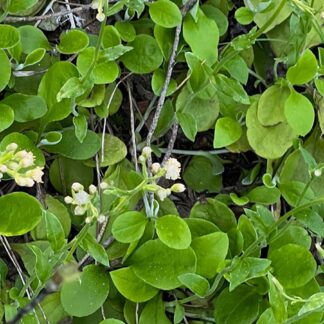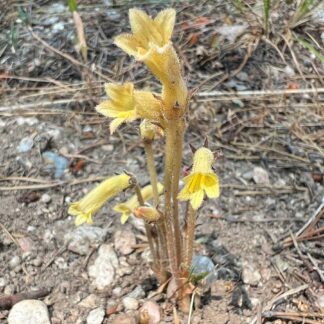July
Showing 13–24 of 200 results
-

Angelica arguta / Lyall’s angelica
- white to yellow to pink-ish
- compound umbel with teeny individual flowers
- many-toothed compound leaves with sheath surrounding petiole
- leaflets egg-shaped to narrowly oval
- pungent parsley/celery/anise scent when leaves crushed
-

Antennaria racemosa / Hooker’s pussytoes
- ground-level matte or short stems
- basal leaves
- small clumps/racemes of male or female flowers
- teeny white flowers with white involucres
- moist forest understories
-

Antennaria spp. / pussytoes
- small clusters of white flowers, often fringed with red
- flowers look like a cat's toes, sort of
- newest leaves silvery/hairy
- exposed, in many different habitats
-

Anticlea elegans / mountain death camas
- cream to greenish-white flowers; overall hexagonal appearance
- branched flowering stem with multiple flowers not tightly packed
- 6 tepals (petals + sepals), greenish-yellow nectar glands
- grass/lily-like leaves
- blooms in summer (July/August)
-

Aphyllon franciscanum / yellow-clustered broomrape
- tubular yellow, 5 petalled flowers
- short (6")
- no leaves at all, ever
- very hairy stems and flowers
- parasitic, especially on buckwheats
-

Apocynum androsaemifolium / spreading dogbane
-
short and spreading perennial
-
oval leaves with pointed tips, prominent veins
-
clusters of teeny, pink, bell-shaped flowers with recurved petals
-
conspicuous darker pink stripes on inner surface of corolla
- exudes milky sap when stems or leaves are broken
-
-

Apocynum cannabinum / common dogbane
- herbaceous perennial with red stems and long/narrow leaves
- leaves have prominent veins
- leaves and stems exude white latex if broken
- white, bell-shaped flowers held erect in stalked clusters
- seedpods long, thin and brownish; in pairs
- often near streams or in moist places
-

Aquilegia coerulea / Colorado blue columbine
- blue to white to pink or yellow tinged
- long spurs (tails) as long as the petals are large
- blooms late spring and July (stragglers in August)
-

Arctium minus / lesser burdock
- purple to pink to lavender thistle-like flowers with hooked bracts
- nasty hooked seed heads
- very large, heart-shaped leaves
- found in a wide variety of disturbed areas
-

Arnica cordifolia / heartleaf arnica
- yellow, daisy-like flowers; 1-2 per shoot
- opposite, heart shaped leaves; long petioles; 2-4 pair per stem
- large clonal colonies with many flowering and non-flowering shoots
- the dominant ground cover in moderate shade in many forests
-

Artemisia absinthium / wormwood
- deeply lobed leaves; grey-green (hairy); aromatic (like sage)
- stems to 4' tall; up to 20 per plant
- small clusters of teeny yellow flowers in drooping heads
- disturbed areas and may be weedy
-

Artemisia ludoviciana / white sage
- low, spreading perennial - up to 3 feet tall
- silvery leaves and stems (hairy)
- leaves lance shaped, but sometimes lobed
- shoots die back in winter
- aromatic
Showing 13–24 of 200 results